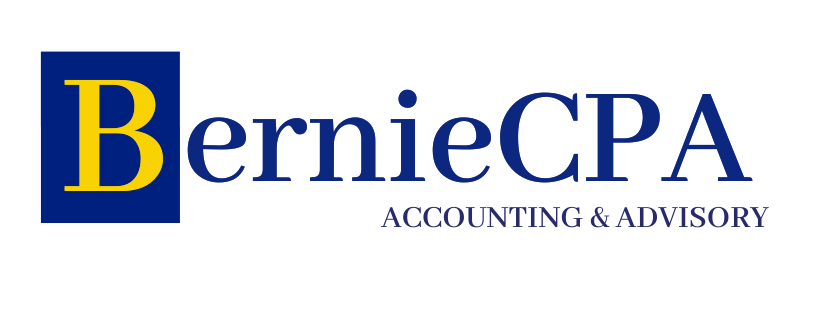Quarterly Tax Time: Simplifying the Process of Calculating Your Payments
Quarterly tax payments are a way for self-employed individuals and business owners to stay on top of their tax obligations throughout the year. Instead of waiting until the end of the year to pay taxes, quarterly payments allow taxpayers to spread out their tax liability over four payments due in April, June, September, and January. This can help prevent a large tax bill at the end of the year and can also help avoid penalties for underpayment. Understanding how quarterly tax payments work is essential for anyone who is self-employed or has income that is not subject to withholding.
When it comes to understanding quarterly tax payments, it’s important to know that the amount you pay each quarter is based on your estimated income and tax liability for the year. This means that you will need to calculate your expected income, deductions, and credits for the year and use that information to determine how much you should pay each quarter. It’s also important to keep in mind that quarterly tax payments are not optional for those who meet certain income thresholds. If you expect to owe $1,000 or more in taxes for the year after accounting for withholding and refundable credits, you are generally required to make quarterly tax payments.
Organizing Your Financial Records
Organizing your financial records is crucial when it comes to making accurate quarterly tax payments. Without proper record-keeping, it can be difficult to estimate your income and expenses for the year, which can lead to underpayment or overpayment of taxes. To stay organized, it’s important to keep track of all income, expenses, and deductions throughout the year. This can include keeping receipts, invoices, bank statements, and any other documentation related to your finances.
One way to stay organized is to use accounting software or a spreadsheet to track your income and expenses. This can help you easily generate reports that show your income and expenses for each quarter, making it easier to estimate your tax liability. Additionally, keeping separate bank accounts and credit cards for business and personal expenses can help streamline the process of tracking your finances. By staying organized and keeping accurate records, you can ensure that you are making the correct quarterly tax payments and avoid any potential penalties for underpayment.
Calculating Your Estimated Income
Calculating your estimated income is a key step in determining how much you should pay in quarterly tax payments. To do this, you will need to consider all sources of income, including wages, self-employment income, investment income, rental income, and any other sources of taxable income. You will also need to take into account any deductions and credits that you expect to claim for the year. This can include deductions for business expenses, retirement contributions, health insurance premiums, and any other eligible expenses.
Once you have gathered all of the necessary information, you can use it to estimate your total income for the year. This can be done by projecting your income for each quarter based on past performance and expected changes in your business or financial situation. It’s important to be as accurate as possible when estimating your income, as underestimating can lead to underpayment of taxes and potential penalties. By taking the time to calculate your estimated income, you can ensure that you are making the correct quarterly tax payments and avoid any surprises at tax time.
Deductible Expenses and Credits
When it comes to calculating your quarterly tax payments, it’s important to take into account any deductible expenses and credits that you may be eligible for. Deductible expenses can include a wide range of items, such as business expenses, home office expenses, travel expenses, and any other costs related to earning income. By deducting these expenses from your income, you can lower your taxable income and reduce your tax liability. Additionally, there are a variety of tax credits available that can help reduce your tax bill dollar-for-dollar.
To take advantage of deductible expenses and credits, it’s important to keep thorough records of all expenses and to stay informed about any changes to tax laws that may affect your eligibility for certain deductions or credits. By staying organized and keeping accurate records, you can ensure that you are maximizing your deductions and credits and reducing your tax liability as much as possible. This can help you make more accurate quarterly tax payments and avoid overpaying throughout the year.
Utilizing Tax Software or Professional Assistance
When it comes to calculating and making quarterly tax payments, many individuals find it helpful to utilize tax software or seek professional assistance. Tax software can help simplify the process of estimating income, calculating deductions and credits, and determining how much to pay in quarterly taxes. There are a variety of software options available that cater to different needs and levels of complexity. Some software programs even offer features specifically designed for self-employed individuals and small business owners.
For those who prefer a more hands-on approach or have complex financial situations, seeking professional assistance from a tax accountant or financial advisor may be beneficial. A professional can help ensure that you are taking advantage of all available deductions and credits, as well as provide guidance on how to accurately estimate your income and tax liability for the year. While professional assistance may come with a cost, it can provide peace of mind and help prevent potential errors or oversights when it comes to making quarterly tax payments.
Submitting Your Quarterly Tax Payments
Once you have calculated your estimated income, deductions, and credits, it’s time to submit your quarterly tax payments. The IRS provides several options for making these payments, including online payment options, electronic funds withdrawal, check or money order by mail, or through the Electronic Federal Tax Payment System (EFTPS). It’s important to make sure that your payments are submitted on time to avoid penalties for underpayment.
When submitting your quarterly tax payments, it’s important to keep thorough records of each payment made. This can include keeping copies of payment confirmations, bank statements showing the withdrawal of funds, or any other documentation related to the payment. By keeping accurate records, you can ensure that you have proof of payment in case there are any discrepancies or issues with the IRS.
Adjusting Your Payments Throughout the Year
As your financial situation changes throughout the year, it’s important to adjust your quarterly tax payments accordingly. This can include increasing or decreasing your payments based on changes in income, expenses, deductions, or credits. For example, if you experience a significant increase in income or have unexpected expenses that reduce your taxable income, you may need to adjust your quarterly tax payments to avoid underpayment penalties.
To make adjustments to your quarterly tax payments, you can use Form 1040-ES provided by the IRS. This form allows you to recalculate your estimated tax liability based on changes in your financial situation and adjust your payments accordingly. By staying proactive and adjusting your payments as needed, you can ensure that you are making accurate quarterly tax payments throughout the year.
In conclusion, understanding how quarterly tax payments work and staying organized with your financial records is essential for anyone who is self-employed or has income that is not subject to withholding. By accurately calculating your estimated income, taking advantage of deductible expenses and credits, utilizing tax software or professional assistance, submitting your quarterly tax payments on time, and adjusting your payments throughout the year as needed, you can ensure that you are meeting your tax obligations and avoiding potential penalties for underpayment. With careful planning and attention to detail, making quarterly tax payments can be a manageable part of managing your finances as a self-employed individual or business owner.


